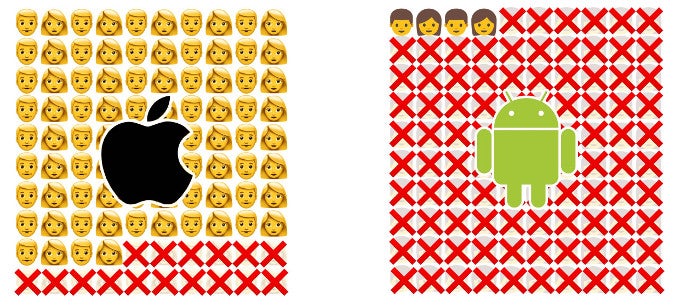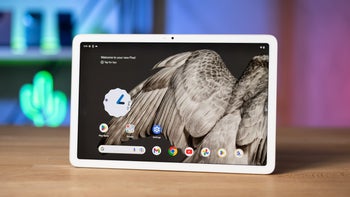With the release of Android 7.0 Nougat, Google had the first major OS to support the newest
Unicode 9 standard. This meant the addition of 72 new emoji, along with skin tone modifiers, and later, with the 7.1 update, new professions and gendered emoji, as detailed in the Emoji 4.0 update draft. While many would applaud the company's openness toward diversifying the tiny symbols, the sad reality of Android's software updates soon kicked in.
In a detailed blog post on their website, Emojipedia, a major resource of information about the phenomenon, compared users' ability to use the newest available emoji and found that less than 4 percent of its visitors' phones run Nougat, which is the only release of the OS to support the newer standard. Compared to the site's iOS statistics, which show 84 percent of Apple devices running iOS 10, the difference in adoption rates is staggering. Looking at those numbers and the source they come from, one might argue that emoji aren't really that big of a deal, and, in fact, the regular updates to the standard may be getting out of hand, but this isn't really the point of this article.
The real problem, and also the reason for the lack of widespread support of newer emoji on Android, is also one of the platform's biggest problems since its inception – software updates. Since emoji are part of the regularly updated Unicode standard, support for them needs to be built at the OS level, making their distribution to older versions cumbersome and, ultimately, not worth developers' time. This is true for both Android and iOS, yet Apple's platform doesn't suffer from the same problem nearly as much. The reason for this is simple – save for the Pixel, Google doesn't build its own phones, and as a result doesn't control the distribution of updates, unlike Apple, their main competitor in this industry, which has exclusive control over its devices' software. This, combined with OEMs' affinity towards OS customization, makes each new Android release painfully slow, as each custom feature needs to be ported, tested, and eventually distributed to users, which is a lengthy and arduous process. And this is the best-case scenario, as more often than not manufacturers simply choose to abandon older devices rather than update them. And, most recently, another big problem was
Google's insistence on making Vulkan support mandatory for all Nougat devices, rendering a huge amount of phones “incompatible” with the update.
This problem, however, isn't just a matter of users missing out on a few new features – not providing software updates is also irresponsible and user-hostile. Segregating the user base is problematic for both developers and users, forcing apps that rely on a particular API or feature to be either crippled or simply not available on earlier OS versions. Ending a device's support usually means the OEM won't provide even the most basic of security updates, putting users at risk in a time where the threat of hacking is becoming more serious by the day. From a business standpoint, it's understandable for a company to cut its losses and cease support of a given device, particularly in cases where sales expectations haven't been met. However, by making such decisions, vendors risk eroding consumer trust, as public reactions to such moves tend to be wildly negative.
An easy solution to this problem, however, doesn't exist. Google can't just force OEMs to update, as this would result in one of two things: either the burden of supporting each and every device will fall on Google's shoulders – a task pretty much impossible to handle by a single company, no matter its size; or the responsibility would be that of the vendors, who will quickly find a simpler and cheaper alternative, a number of which have existed through the years, but have ultimately failed precisely because of Android's no-strings-attached policy. The best the company can do right now is lead by example and support their devices like users expect them to. Judging by their track record, however,
two years of guaranteed OS updates is the best they can do, and, unfortunately, this has become something of an industry standard. The only major outlier is Apple, with its latest
iOS 10 supporting devices all the way back to the iPhone 5, which came out almost five years ago. So while many would disagree with the company's walled garden approach, in this particular case it actually works in users' favor, something more manufacturers should strive for.
source:
Emojipedia via
Android Central













Things that are NOT allowed: